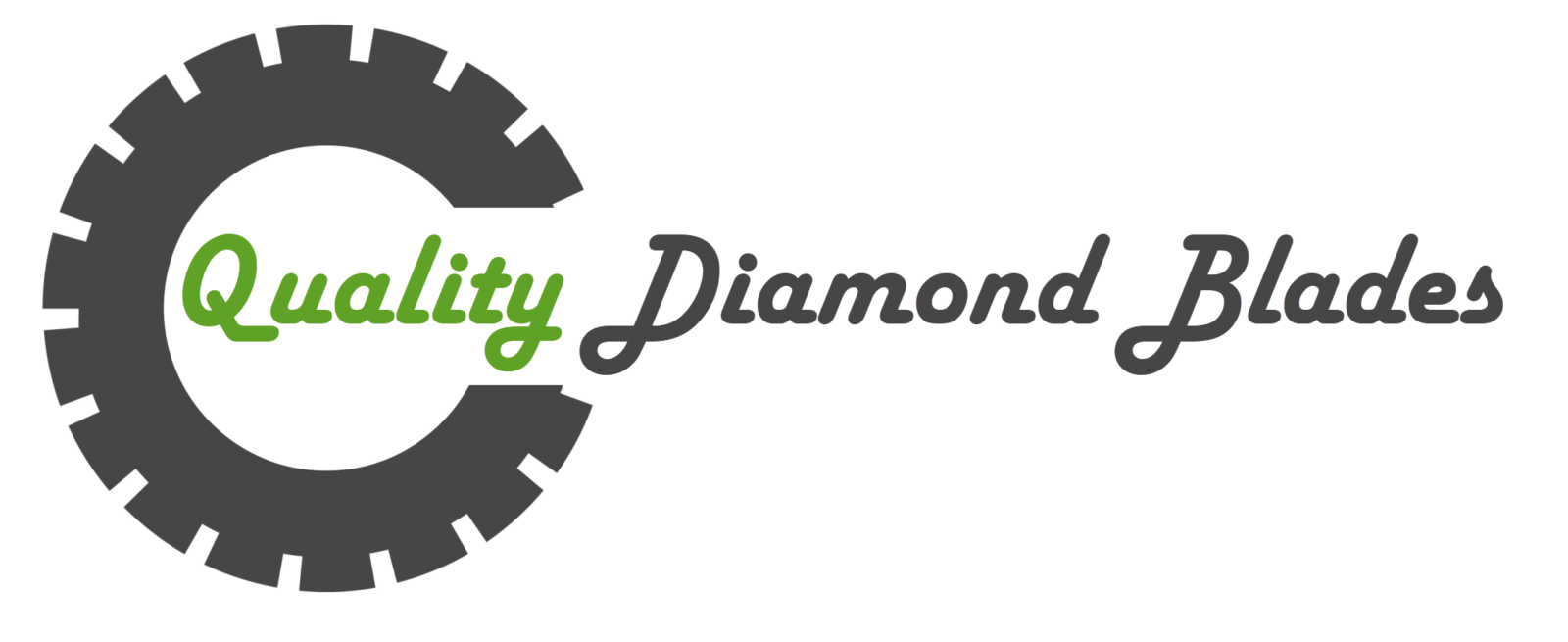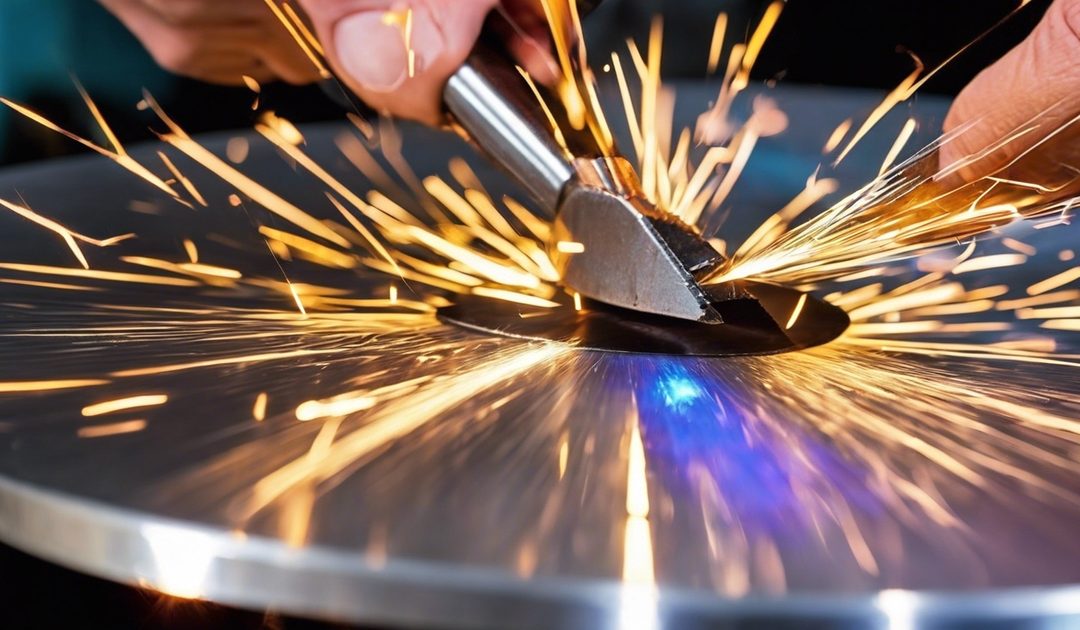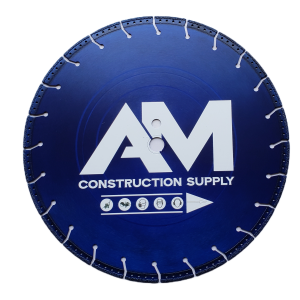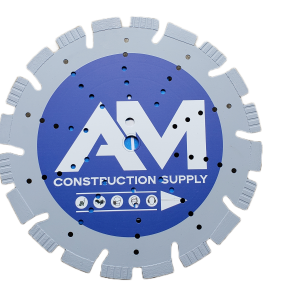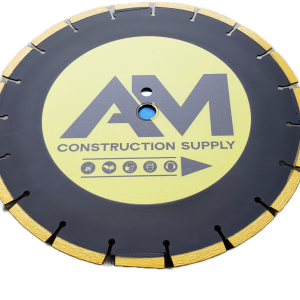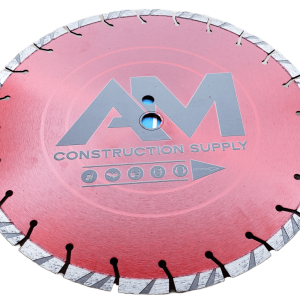A turbo diamond blade is a cutting tool used for construction and renovation projects. It features a serrated edge with synthetic diamond crystals, allowing it to swiftly cut through tough materials such as concrete, brick, stone, and tile. This type of blade is engineered for speed and efficiency, making it ideal for professionals who require precision and durability in their cutting equipment. The turbo design enables faster cutting while minimizing chipping and debris. Its versatility makes it suitable for various applications, including dry or wet cutting methods.
Turbo diamond blades are available in different sizes to accommodate specific tools and tasks. They are commonly utilized by contractors, masons, and DIY enthusiasts due to their ability to deliver clean cuts with minimal effort. Understanding the features and benefits of turbo diamond blades can significantly enhance the quality and efficiency of construction projects.
Key Takeaways
- Turbo diamond blades have a serrated edge for faster and smoother cutting of hard materials like concrete, brick, and stone.
- When choosing between turbo and continuous rim blades, consider the material being cut and the desired cutting speed.
- Turbo blades are suitable for dry and wet cutting, making them versatile for various construction and renovation projects.
- The key benefits of turbo diamond blades include faster cutting speed, cleaner cuts, and reduced chipping.
- Understanding the technical specifications and compatibility considerations is crucial for selecting the right turbo diamond blade for specific applications.
- To make informed decisions about turbo diamond blades, consider consulting with experts and furthering your knowledge about different blade types and applications.
Turbo Diamond Blade Defined
Core Characteristics
A turbo diamond blade has a core that provides stability and support to the cutting edge. The cores are designed to minimize vibrations during operation, impacting the overall performance of the blade. Different core materials can affect how well the blade performs.
The core of a diamond blade is crucial for stability and support during cutting. It helps reduce vibrations, ensuring smoother cuts. For instance, a steel core offers durability for general-purpose cutting, while a silent core minimizes noise during operation.
Cutting Edge Design
The design of the cutting edge determines how efficient and precise cuts will be. Segmented edges allow for faster material removal, making them ideal for tough applications like concrete or asphalt cutting. On the other hand, continuous rims provide smoother cuts suitable for delicate materials such as tiles or ceramics.
Segmented edges offer fast material removal but may leave rougher finishes compared to continuous rims that ensure smooth and clean cuts.
Turbo Rim Features
Turbo rims on diamond blades have cutouts or indents that aid in cooling and debris removal during operation. They are specifically designed for faster cutting speeds compared to standard continuous rims, making them ideal for aggressive cutting applications like masonry or concrete.
The turbo rim design allows for improved airflow around the blade during use by incorporating cutouts or indents into its structure. This feature enhances cooling and ensures efficient debris removal while maintaining high-speed performance.
Turbo vs Continuous Rim Blades
Cutting Speed
Turbo diamond blades are designed to provide increased cutting speed compared to continuous rim blades. This enhanced cutting speed is crucial for improving productivity on job sites, allowing workers to complete tasks more efficiently. Factors such as the hardness of the material being cut also play a significant role in determining the cutting speed of turbo diamond blades. For instance, softer materials may be cut more quickly than harder ones.
The design of turbo diamond blades enables them to expel debris and heat more effectively during cutting, contributing to their faster cutting speed. As a result, these blades are favored for projects that require swift and precise cuts, such as construction or masonry work.
Finish Quality
While turbo diamond blades excel in providing high cutting speeds, they typically deliver rougher finishes when compared to continuous rim blades. The finish quality achieved with a blade is influenced by various factors including the type of blade used, the material being cut, and operator technique.
To achieve a desired finish quality using turbo diamond blades requires careful consideration during selection and operation. Operators must assess whether a rougher finish is acceptable for their project needs before opting for this type of blade. In instances where a smoother finish is required – such as in tile installation – operators might choose an alternative blade better suited for achieving finer results.
Turbo vs Segmented Blades
Cooling Mechanisms
Turbo diamond blades, unlike segmented ones, incorporate cooling holes to dissipate heat during operation. These cooling mechanisms are crucial as they prevent the blade from overheating and extend its lifespan. Proper cooling not only enhances the overall cutting performance but also ensures that the blade remains in good condition for an extended period of time.
The incorporation of cooling holes in turbo diamond blades is a significant advantage over segmented blades because it allows for efficient heat dissipation during cutting operations. This feature helps to maintain the integrity of the blade by preventing overheating, ultimately leading to a longer lifespan for the tool. As a result, users can rely on turbo diamond blades for consistent and reliable cutting performance across various applications.
Material Removal
One key strength of turbo diamond blades lies in their ability to excel at rapid material removal due to their unique design. The efficient material removal capability of these blades significantly reduces project completion times, making them ideal for tasks that require speed and precision. It’s important to note that material removal rates may vary based on specific blade specifications and application requirements.
In comparison with segmented blades, turbo diamond blades offer superior efficiency. Their design allows for swift and effective material removal, which is particularly advantageous in scenarios where time is of the essence or when working with dense or tough materials such as concrete or granite.
Applications of Turbo Blades
Suitable Materials
Turbo diamond blades are ideal for concrete, brick, block, stone, and masonry materials. They provide efficient cutting for these surfaces due to their unique design. However, it’s crucial to note that they are not suitable for use on metal or metal-related materials. Understanding the compatibility of turbo diamond blades with different materials is essential for successful cutting operations.
Using a turbo diamond blade on unsuitable materials can lead to damage and inefficiency. For instance, attempting to cut metal with a turbo blade can cause excessive wear and tear on the blade, reducing its effectiveness over time. It’s important to match the right tool with the right material to achieve optimal results in any cutting project.
Common Uses
Turbo diamond blades find common applications in various construction activities such as concrete cutting, paver installation, and masonry work. Their versatility allows them to be utilized in both residential and commercial settings across landscaping and renovation projects.
For example, when working on a home improvement project involving installing concrete pavers for a patio or driveway, using a turbo diamond blade can ensure precise cuts without causing chipping or cracking in the material. In commercial construction projects where concrete needs to be cut efficiently and accurately during building renovations or expansions, turbo blades play an integral role in achieving smooth edges and clean cuts.
Benefits of Turbo Diamond Blades
Efficiency Gains
Turbo diamond blades deliver enhanced efficiency by cutting materials at faster speeds. This increased productivity leads to significant time and cost savings on various projects. For instance, when cutting concrete or masonry, the turbo design allows for swift and precise cuts, reducing labor hours and fuel costs. These efficiency gains contribute to improved project timelines and overall profitability.
The ability of turbo diamond blades to cut through hard materials quickly can also reduce wear and tear on equipment like saws or grinders. This not only saves time but also minimizes maintenance needs for these tools, further contributing to operational efficiency.
Durability Factors
One of the key advantages of turbo diamond blades is their high durability, which stems from their robust construction. The segment bonding, core strength, and overall build quality ensure that these blades withstand demanding working conditions without compromising performance. For example, when used in heavy-duty applications such as cutting reinforced concrete or asphalt, turbo diamond blades maintain their sharpness and structural integrity over extended periods.
Proper maintenance plays a crucial role in extending the lifespan of turbo diamond blades. Regular cleaning after use to remove debris buildup helps prevent blade warping or damage due to overheating during operation. Storing the blades properly in designated cases or racks protects them from physical harm that could affect their effectiveness.
Versatility
Turbo diamond blades stand out as versatile tools suitable for a wide range of applications across different industries. Their ability to handle various materials makes them valuable assets on job sites where multiple tasks need completion using different types of materials like stone, brick pavers, ceramic tiles among others.
The versatility offered by turbo diamond blades contributes significantly to cost-effectiveness by reducing the need for multiple blade types dedicated to specific materials or tasks. This means that workers can efficiently switch between cutting different surfaces without having to change equipment frequently.
Technical Specifications
Blade Dimensions
Diamond blade dimensions are crucial for ensuring compatibility with specific power tools. The diameter, arbor size, width, and segment height all play a significant role in the blade’s performance. For instance, a 14-inch diameter turbo diamond blade may not fit on a saw designed for 12-inch blades. Using the correct dimensions is essential to prevent accidents and ensure efficient operation.
Accurate measurements of these dimensions are critical for safe and effective use of turbo diamond blades. If the arbor size does not match the tool’s spindle, it can lead to wobbling or detachment during operation, posing serious safety risks. Similarly, an incorrect segment height may result in inadequate cutting depth or excessive vibration, affecting both the quality of work and user safety.
Bond Types
The bond type significantly impacts the performance of turbo diamond blades. Different bonds determine how effectively diamonds are retained within the segments during cutting operations. A strong bond ensures that diamonds remain intact even under high temperatures and pressures, maintaining consistent cutting efficiency over time.
Selecting the proper bond type is crucial for achieving optimal cutting performance based on specific material applications. For example, softer bonds are suitable for harder materials like concrete while harder bonds are more effective when cutting abrasive materials such as asphalt or green concrete. Choosing an inappropriate bond type can lead to premature wear of the blade or inefficient cutting results.
Compatibility Considerations
Tool Fitment
Turbo diamond blades must fit the power tools being used. This ensures safety and smooth operation. Incorrect fitment can lead to accidents or damage to the blade. It’s crucial to match tool fitment with blade specifications.
For example, if a turbo diamond blade is designed for a 7-inch grinder, it should not be used with a 5-inch grinder. Using the incorrect size could cause the blade to wobble or even break during operation, posing serious hazards.
Matching tool fitment with the appropriate power tool prevents accidents and guarantees efficient cutting performance. When selecting a turbo diamond blade, always ensure that it fits perfectly onto your specific power tool.
Material Match
Selecting the right blade for the material being cut is essential for optimal results. Different materials require different types of blades for effective cutting without causing damage to either the material or the blade itself.
For instance, using a turbo diamond blade specifically designed for cutting concrete on ceramic tiles might result in reduced performance and premature wear of both the tile and the blade due to its unsuitability for that particular material.
Understanding which materials are compatible with each type of turbo diamond blade is crucial when making selections. This knowledge enables users to achieve precise cuts while prolonging their blades’ lifespan.
Usage and Support
Operational Tips
Proper handling techniques are crucial for using turbo diamond blades safely and effectively. This includes wearing appropriate safety gear, such as goggles, gloves, and a dust mask. Inspecting the blade before use is essential to identify any potential issues that could affect its performance or safety. Following operational tips not only maximizes the blade’s performance but also minimizes the risk of accidents.
For example, ensuring that the blade is securely attached to the tool before operation prevents it from coming loose during use. Maintaining a steady hand and applying consistent pressure while cutting helps achieve precise results without putting excessive strain on the blade.
Regularly inspecting blades before each use can reveal any signs of wear or damage that may compromise their effectiveness or pose a safety hazard. By checking for things like cracks, warping, or worn segments, users can take proactive measures to address these issues before they escalate.
Maintenance Advice
Regular cleaning and inspection play a vital role in prolonging the lifespan of turbo diamond blades. After each use, removing debris buildup from the blade’s surface helps prevent it from becoming dull prematurely. Storing blades properly in a dry environment protects them from corrosion and other forms of damage that could occur if they were left exposed to moisture or harsh conditions.
Maintenance advice also encompasses sharpening procedures to restore dulled edges back to their optimal cutting condition. Balancing the blade ensures uniform wear across all segments, promoting consistent cutting performance over time. Moreover, handling precautions involve transporting and storing blades with care to prevent accidental damage.
Learning More about Blades
Industry Resources
Industry resources such as manufacturer guidelines, industry publications, and online forums are valuable sources of information for understanding turbo diamond blades. By referring to manufacturer guidelines, users can gain insights into the proper usage, maintenance, and safety precautions related to these blades. Industry publications often feature articles and case studies that highlight best practices and innovative uses of turbo diamond blades in various applications.
Educational opportunities like workshops or training sessions provide a hands-on approach to learning about turbo diamond blades. Attending these events allows individuals to gain practical knowledge from experts in the field. Workshops may cover topics such as blade selection based on material type, cutting techniques for different materials, and safety protocols when using turbo diamond blades.
Knowing where to find industry resources is crucial for staying updated on best practices related to turbo diamond blades. Whether it’s through online forums where professionals share their experiences or subscribing to industry publications that offer the latest developments in blade technology, being aware of these resources ensures that users have access to current information that can enhance their understanding of turbo diamond blades.
Expert Insights
Gaining insights from industry professionals provides invaluable knowledge about turbo diamond blades. Experienced users who have worked extensively with these tools can offer practical advice on maximizing blade performance and achieving optimal results during cutting operations.
Learning from experienced users offers practical tips for maximizing blade performance. For example, seasoned professionals might share techniques for extending the lifespan of a turbo diamond blade through proper maintenance routines or adjusting cutting speeds based on specific materials being worked with.
Hearing expert opinions aids in making informed decisions about blade selection. Professionals within the construction or masonry industries may provide recommendations based on factors such as project requirements, material characteristics, and budget considerations.
Summary
In conclusion, understanding the differences between turbo, continuous rim, and segmented diamond blades is crucial for choosing the right tool for specific cutting applications. Turbo diamond blades are designed for fast, aggressive cutting, making them ideal for hard materials like concrete, brick, and stone. Their unique design allows for efficient debris removal and cooling during operation, enhancing both speed and precision. Considering technical specifications and compatibility with equipment is essential for maximizing the performance and lifespan of turbo diamond blades.
For those seeking to delve deeper into the world of diamond blades, exploring additional resources on blade maintenance, safety guidelines, and advanced cutting techniques can further enrich their knowledge and proficiency in using these tools effectively.
Frequently Asked Questions
What is a turbo diamond blade?
A turbo diamond blade is a type of saw blade with a serrated rim that allows for faster and smoother cutting of hard materials such as concrete, brick, and stone. The design includes cutouts or indents to help with cooling during operation.
How does a turbo diamond blade differ from continuous rim blades?
Turbo diamond blades have cutouts or indents which provide better cooling during cutting, making them suitable for dry cutting applications. Continuous rim blades, on the other hand, have smooth continuous rims for precise and chip-free cutting in wet applications like tile and ceramic.
In what applications are turbo blades commonly used?
Turbo diamond blades are commonly used for dry cutting applications such as concrete, brick, pavers, and natural stone. Their design allows for efficient material removal while providing good airflow to prevent overheating during use.
What are the benefits of using turbo diamond blades?
The benefits of using turbo diamond blades include faster cutting speeds due to their serrated rim design, reduced chipping in hard materials, and improved cooling properties. They are also versatile and can be used in various dry-cutting applications.
What technical specifications should be considered when selecting a turbo diamond blade?
When selecting a turbo diamond blade, consider factors such as the diameter size compatible with your equipment, the arbor size (mounting hole), maximum RPM rating to ensure safe operation, and the material composition of the blade suitable for specific applications.
